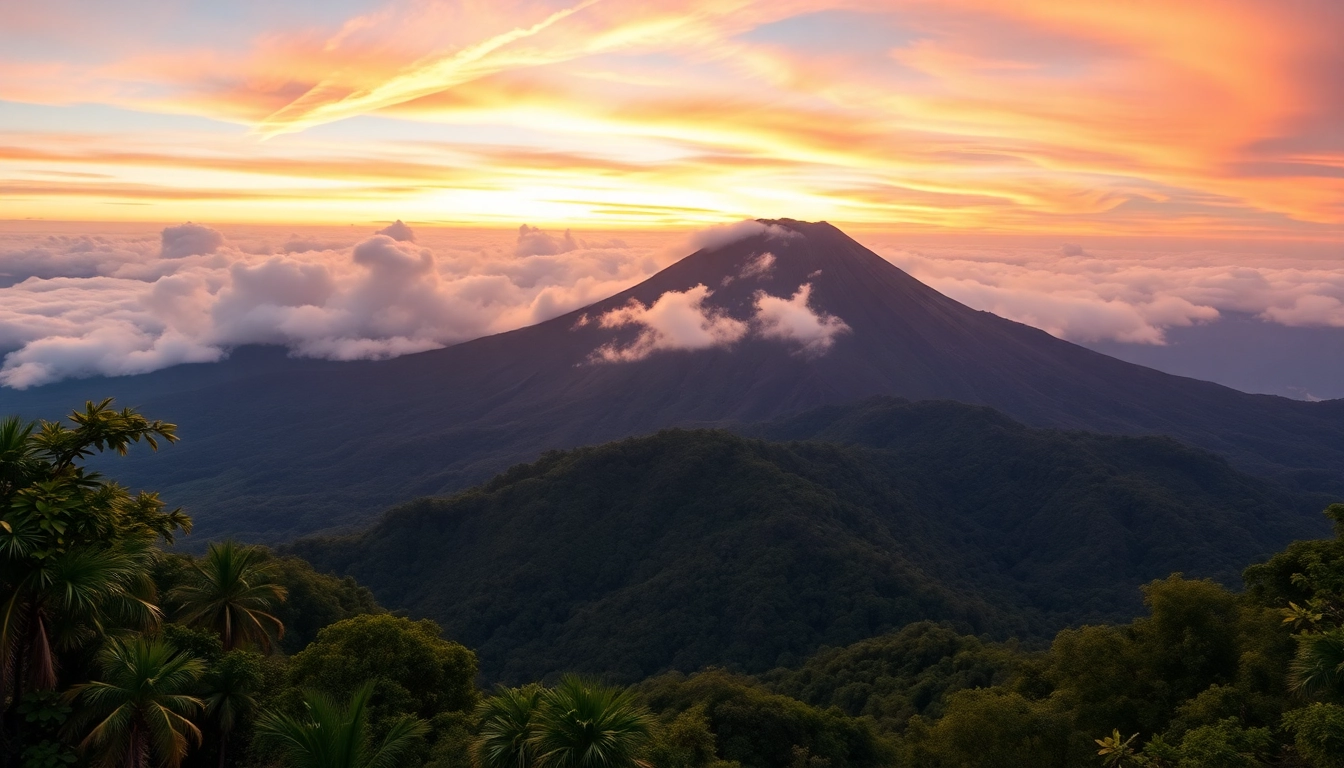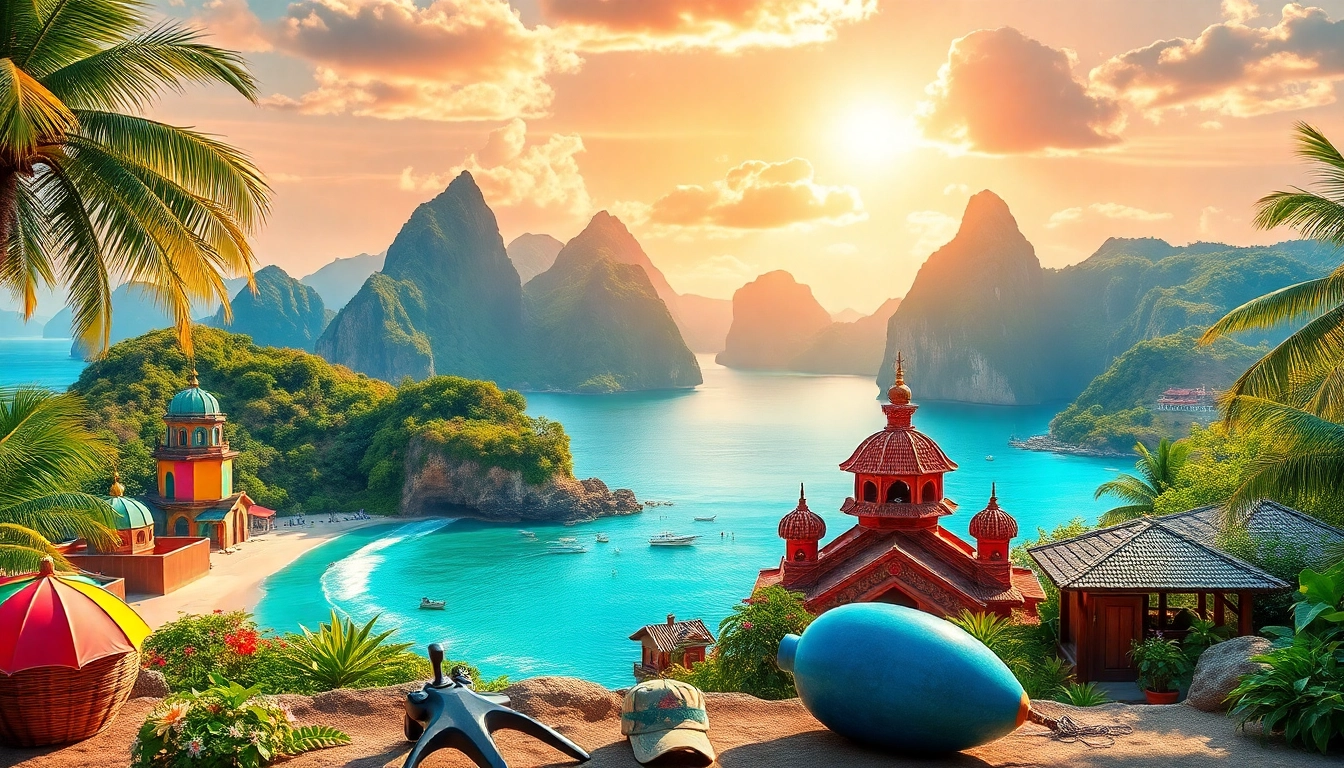Introduction to Mount Rinjani
Perched majestically on the Indonesian island of Lombok, Mount Rinjani stands as one of Southeast Asia’s most awe-inspiring natural landmarks. Not just a dormant volcano, but an active geological titan, Rinjani’s towering presence commands respect and admiration from travelers, scientists, and local communities alike. Its rich history, awe-inspiring landscapes, and cultural significance make it a must-visit destination for adventure seekers and nature lovers. This comprehensive guide explores the multifaceted allure of Mount Rinjani, providing valuable insights into its geological importance, trekking opportunities, ecological significance, and cultural heritage.
Historical Significance and Geological Features
Mount Rinjani’s history spans thousands of years, intertwined with the geological evolution of the Indonesian archipelago. As the second-highest volcano in Indonesia, reaching approximately 3,726 meters (12,246 feet) above sea level, Rinjani has a complex volcanic system characterized by a large caldera, crater lake (Segara Anak), hot springs, and fumaroles. Its formation dates back over 200,000 years, with major eruptions shaping the island’s landscape and influencing regional climate patterns.
The most notable eruption occurred in 1257, originating from the neighboring Mount Samalas, the volcanic ancestor of Rinjani. This eruption triggered a global cooling event, drastically impacting agricultural production and leading to societal upheaval in various parts of Asia and beyond. Today, Rinjani remains an active volcanic system, with monitored eruptions occurring sporadically, reminding visitors of its immense power and the importance of respecting its geological cycles.
Geologically, Rinjani is a stratovolcano featuring layers of lava flows, ash deposits, and pyroclastic material. Its caldera, measuring roughly 16 kilometers across, houses the picturesque Segara Anak Lake, which is a volcanic crater lake filled with mineral-rich, turquoise water. The volcano’s layered structure and ongoing geothermal activity serve as vital research sites for volcanologists studying eruption patterns, magma movement, and climate impacts.
Location and Accessibility in Lombok
Situated in North Lombok Regency, Mount Rinjani is accessible from various gateway towns and communities. The mountain’s location within the Rinjani National Park makes it a protected area, ensuring conservation efforts align with tourism development. The nearest major town is Senggigi, a popular tourist hub with amenities, transportation services, and accommodations. From Senggigi, travelers typically travel to the starting points of trek routes—most notably, Sembalun Lawang and Senaru villages.
Getting to Lombok itself is straightforward, with direct flights from major Indonesian cities like Jakarta, Bali, and Surabaya. International travelers can often connect via Bali’s Ngurah Rai International Airport, followed by a short domestic flight to Lombok or a ferry ride. Once on the island, organized tours and local transport options make reaching the trailheads practical for trekkers of all experience levels.
Access to Mount Rinjani is well-developed, with designated entry points and established trekking routes. Guided tours are recommended for international visitors unfamiliar with the terrain or local conditions, but independent trekkers can also navigate the area with proper planning and local support.
Why Mount Rinjani is a Must-Visit Destination
Beyond its imposing physical stature, Mount Rinjani offers an array of compelling reasons that make it a standout destination. Its status as a UNESCO Biosphere Reserve, its diverse ecosystems, and its cultural importance position Rinjani as a natural marvel with profound significance.
For adventure enthusiasts, the thrill of conquering Indonesia’s second-highest volcano presents a challenge unlike any other. The panoramic vistas from above, encompassing lush forests, crater lakes, and nearby islands, reward perseverance with breathtaking views. Photography opportunities abound, with landscape compositions that change dramatically with the seasons and weather conditions.
Ecologically, Rinjani is a home to unique flora and fauna, while culturally, it is revered by the local Sasak and Lombok communities. Its sacred status and spiritual significance foster a respectful and responsible approach to tourism, promoting sustainable practices that benefit local livelihoods and conservation efforts.
Furthermore, Rinjani’s proximity to other attractions—such as nearby waterfalls, traditional villages, and surf beaches—means visitors can combine adventure with cultural immersion and relaxation. Whether it’s witnessing the sunrise from the summit, exploring indigenous crafts, or soaking in natural hot springs, Rinjani’s multifaceted appeal makes it an unforgettable experience for all.
Planning Your Rinjani Trekking Expedition
Best Seasons and Timing for the Hike
The optimal time to trek Mount Rinjani is during the dry season, typically between May and October, when weather conditions are most predictable. During this timeframe, clear skies, minimal rainfall, and stable temperatures provide safer and more enjoyable trekking experiences. The peak months—July to September—are often the busiest, so advanced bookings are advisable.
Avoid the rainy season (November to April), when heavy monsoon rains increase risks of landslides, slippery trails, and reduced visibility. Additionally, some routes could be temporarily inaccessible due to weather conditions or volcanic activity. Monitoring local forecasts and park advisories enhances safety and trip planning.
Required Equipment and Personal Preparation
Preparing thoroughly is key to a successful Mount Rinjani trek. Essential gear includes:
- Sturdy, high-ankle hiking boots with good grip
- Warm clothing layers—thermal underwear, fleece, waterproof jacket
- Sleeping bag and mat for overnight stays
- Headlamp or flashlight with extra batteries
- Personal toiletries and quick-dry towels
- High-protein snacks and hydration supplies
- Sun protection—sunscreen, hat, sunglasses
Physical conditioning is crucial, as the trek involves challenging ascents and descents, high-altitude conditions, and variable terrains. Cardiovascular fitness, hiking experience, and mental resilience contribute significantly to group safety and enjoyment.
Most trekkers undertake a multi-day journey, so packing appropriate gear and acclimatizing before the trek reduces altitude sickness risks. Consulting with expert guides and local authorities provides additional insights into current trail conditions and safety protocols.
Guided Tours vs. Independent Trekking Options
While independent trekking is possible, guided tours remain the most popular and safest way to explore Mount Rinjani. Guided expeditions offer several advantages:
- Expert knowledge of trail routes and local conditions
- Permits and logistics handled professionally
- Safety management in case of emergencies
- Educational insights into local culture, flora, and fauna
- Provision of necessary gear and meals
Several reputable trekking companies operate on the island, offering various packages tailored to different experience levels and budgets. For independent trekkers, local authorities provide permit services, but it’s essential to arrange guides and secure permissions beforehand.
Trail Routes and Difficulty Levels
Popular Trekking Routes and Duration
The main routes to the summit of Mount Rinjani are Sembalun Lawang and Senaru. Each offers distinctive experiences and challenges:
Sembalun Route
This is the most popular and accessible route, favored for its relatively gentle slopes and scenic views. The trek typically takes 2-3 days, with the first day covering approximately 11-12 km. The route passes through lush forests, cultivated fields, and volcanic landscapes, culminating in an overnight camp near the crater rim. Summit ascent usually occurs in the early morning of the second day, aiming to catch sunrise views.
Senaru Route
Known for its more challenging terrain and dense forests, this route is favored by experienced trekkers seeking a less crowded experience. Covering similar distances over 2-4 days, it features more rugged paths and opportunities to explore waterfalls, hot springs, and culturally significant sites. The summit climb here requires good physical preparation and careful navigation.
Challenges and Safety Tips for Climbers
Trekkers should be prepared for several challenges, including:
- High altitude sickness: acclimatize adequately and ascend gradually
- Unpredictable weather: pack appropriate clothing and monitor forecasts
- Slippery and uneven trails: wear suitable footwear and proceed cautiously
- Volcanic activity: stay informed about current activity levels and park advisories
Safety tips emphasize hydration, pacing, and respecting the environment. Avoid unnecessary risks, always follow guide instructions, and carry communication devices like radios or satellite phones in remote areas.
Accommodations and Rest Stops on the Trek
Facilities along the route are minimal but strategically located. Trekkers camp in designated areas, with some tour operators providing tents, sleeping bags, and meals. In Sembalun and Senaru villages, lodges and guesthouses offer pre- and post-trek accommodations. These regions also serve as cultural hubs where visitors can experience local Sasak traditions, crafts, and cuisine before embarking or returning from their adventure.
Wildlife, Flora, and Conservation
Unique Ecosystems within Rinjani National Park
Mount Rinjani’s diverse elevations support various ecosystems, from tropical lowland forests to alpine habitats near the summit. The park’s rich biodiversity includes endemic and endangered species such as the Rinjani PIT Viper, Sumatran Rhinos (historically), and a plethora of birdlife, insects, and plant species.
Forests are predominantly dipterocarp and montane types, providing habitats for various fauna. The crater lake and surrounding wetlands are crucial for migratory birds and freshwater ecosystems, while the volcanic slopes support unique alpine plants adapted to harsh conditions.
Endangered Species and Preservation Efforts
Conservation initiatives focus on protecting species threatened by habitat loss, illegal hunting, and environmental degradation. The park authority actively manages reforestation programs, anti-poaching patrols, and ecotourism policies designed to minimize ecological footprints.
Recognizing the importance of sustainable tourism, authorities and local communities collaborate on education, eco-friendly infrastructure, and community-based conservation projects. Increased awareness and responsible visitation are critical to maintaining Rinjani’s ecological integrity.
How Visitors Can Contribute to Conservation
All visitors play a vital role in conservation. Practical steps include:
- Obeying park regulations and staying on designated trails
- Carrying out all waste and avoiding littering
- Supporting local communities through responsible tourism
- Participating in eco-volunteering programs if available
- Educating oneself on local biodiversity and threats
By practicing environmentally conscious behaviors, visitors help ensure that future generations can enjoy the natural wonders of Mount Rinjani.
Post-Trek Activities and Cultural Insights
Local Culture and Traditions of Lombok
Lombok’s rich cultural tapestry is deeply entwined with its natural landscape. The Sasak people, indigenous to Lombok, celebrate a vibrant heritage through traditional crafts, dances, and rituals. Visiting local villages offers authentic experiences—watching woven textiles being produced, learning about age-old conservation ceremonies, or participating in traditional ceremonies at the mountain’s sacred sites.
Mount Rinjani itself holds spiritual significance for local communities, regarded as a sacred mountain where ancestral spirits dwell. Respecting local customs and participating in cultural exchanges enriches the trekking experience and fosters meaningful connections.
Nearby Attractions and Natural Sites
After conquering Rinjani, travelers can explore Lombok’s other natural and cultural attractions. These include:
- Gilis Islands: Pristine coral reefs ideal for diving and snorkeling
- Sendang Gile and Tiu Kelep Waterfalls: Stunning waterfalls near Senaru
- Pink Beach: Unique beaches with rose-colored sands
- Sasak Villages: Experience traditional Sasak architecture and crafts
These sites provide opportunities for relaxation, cultural immersion, and further eco-adventures.
Responsible Tourism and Sustainable Travel Tips
Promoting sustainable tourism ensures that Rinjani’s natural beauty remains intact. Practical tips include:
- Supporting local guides, businesses, and artisans
- Using eco-friendly products and minimizing plastic waste
- Respecting local customs and securing proper permits
- Choosing eco-lodges and tour operators committed to sustainability
- Engaging in environmental education during your visit
In adopting these practices, travelers contribute to the conservation of Mount Rinjani and the prosperity of local communities.

